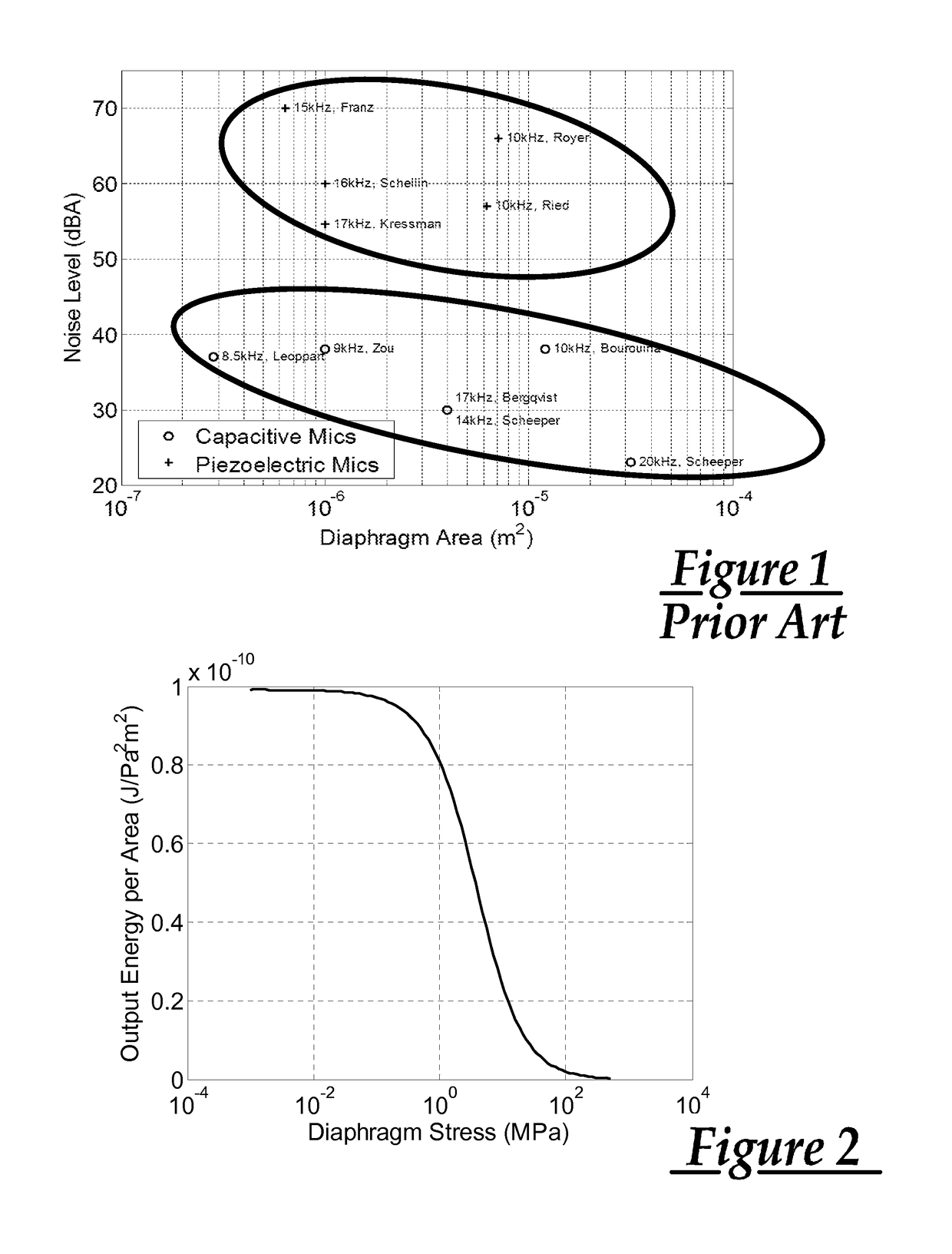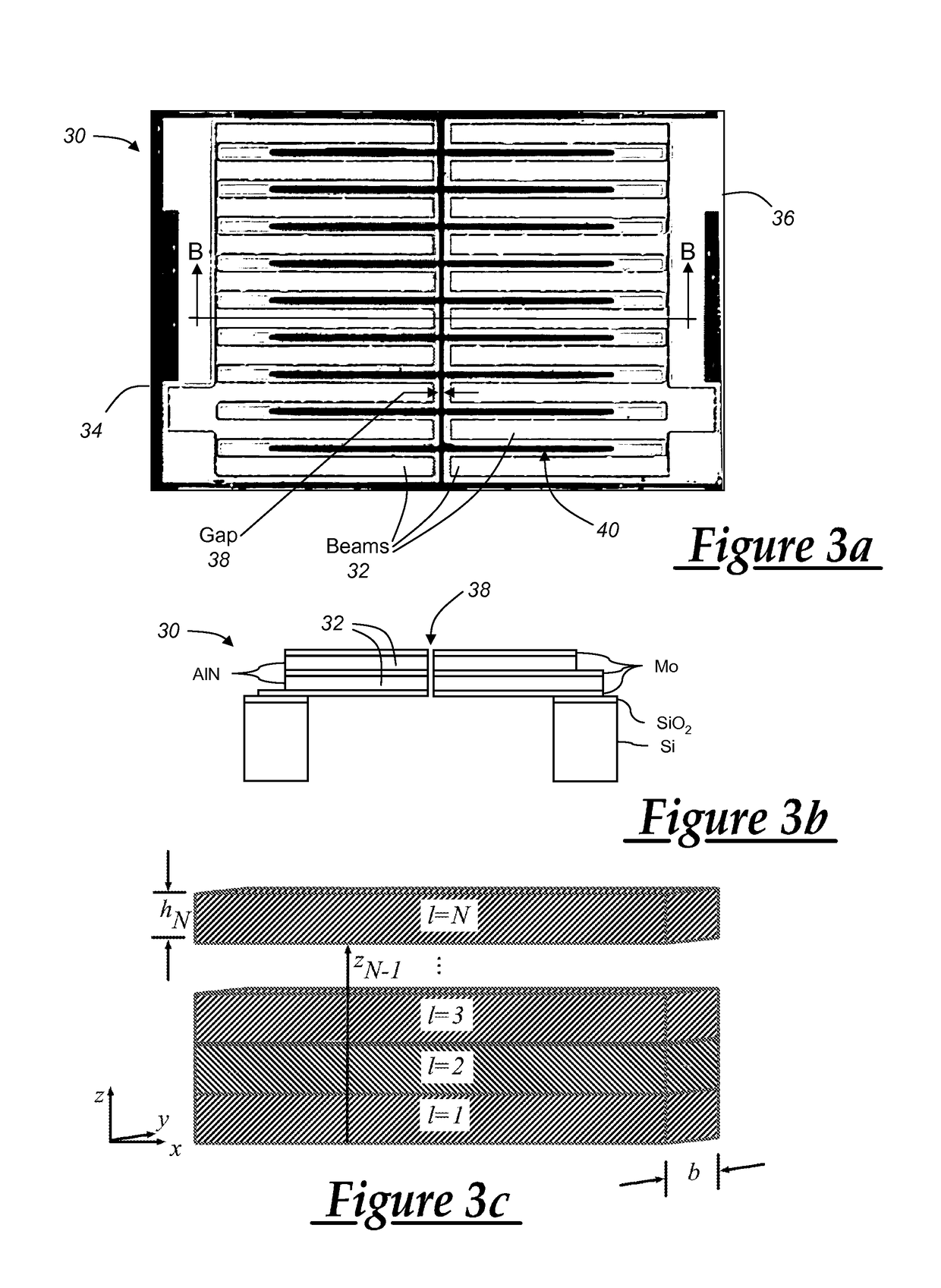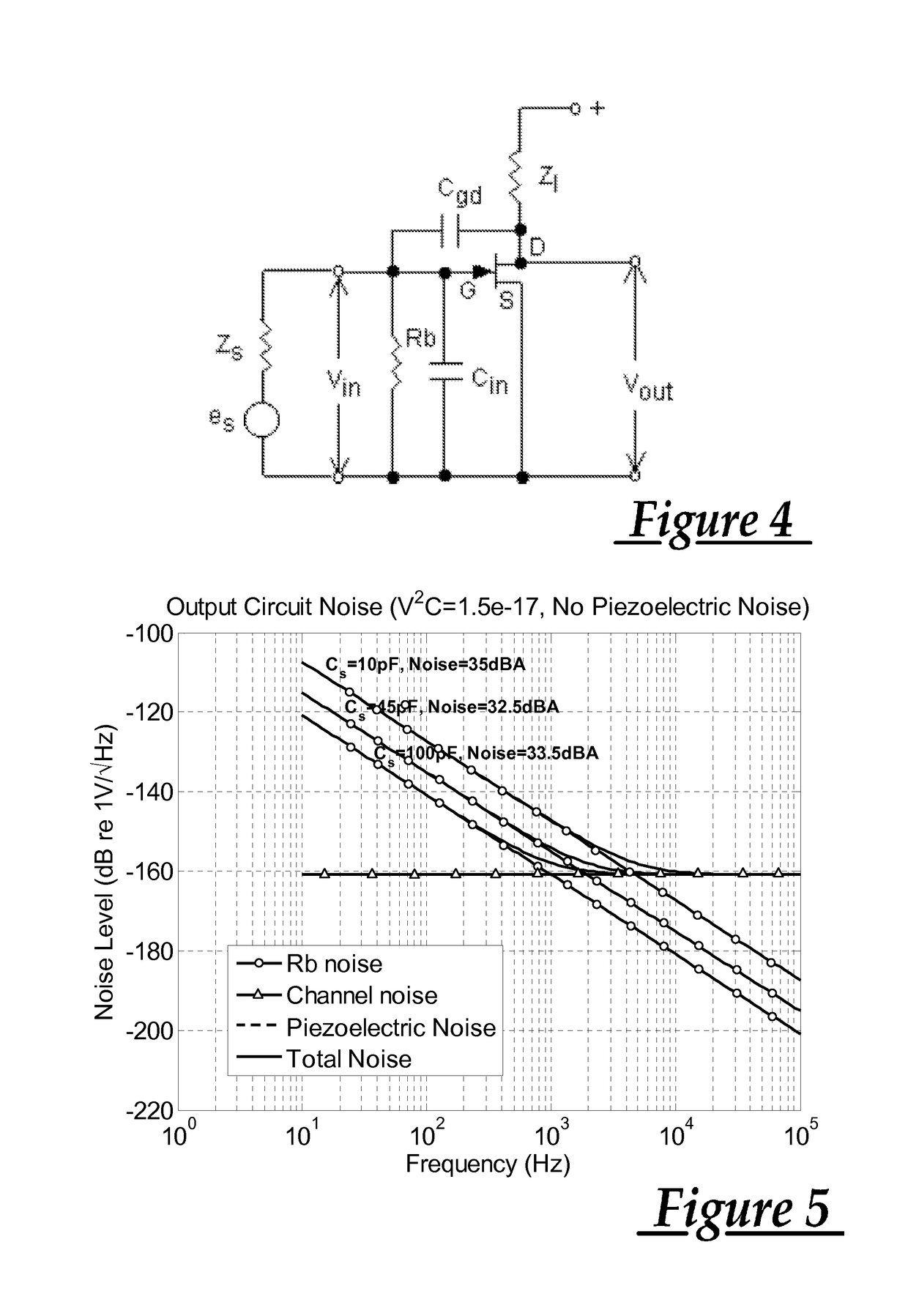Piezoelectric MEMS microphone
a microphone and piezoelectric technology, applied in the field of piezoelectric mems microphones, can solve the problems of high cost, inability to mount to a printed circuit board, and the inability to use mems capacitive microphones, which are often used in cell phones,
- Summary
- Abstract
- Description
- Claims
- Application Information
AI Technical Summary
Benefits of technology
Problems solved by technology
Method used
Image
Examples
Embodiment Construction
[0049]The description that follows is directed to various embodiments of a piezoelectric MEMS microphone that meets an optimization criteria which can be determined in one or more of the different manners described below.
[0050]Typical piezoelectric MEMS microphones are designed so as to optimize sensitivity of the microphone, and this is at least partially responsible for the increased noise floors noted above for these devices. As described below, by optimizing the ratio of output energy to sensor area for a given input pressure, bandwidth, and piezoelectric material, a piezoelectric MEMS microphone can be constructed that has sufficient sensitivity for typical applications along with a noise floor similar to that of capacitive MEMS microphones. This approach is valid for films of good quality. However, as the film is reduced in thickness, the film quality will degrade. This factor can be accounted for with an alternative approach described herein which utilizes a calculated optimi...
PUM
 Login to View More
Login to View More Abstract
Description
Claims
Application Information
 Login to View More
Login to View More - R&D
- Intellectual Property
- Life Sciences
- Materials
- Tech Scout
- Unparalleled Data Quality
- Higher Quality Content
- 60% Fewer Hallucinations
Browse by: Latest US Patents, China's latest patents, Technical Efficacy Thesaurus, Application Domain, Technology Topic, Popular Technical Reports.
© 2025 PatSnap. All rights reserved.Legal|Privacy policy|Modern Slavery Act Transparency Statement|Sitemap|About US| Contact US: help@patsnap.com



